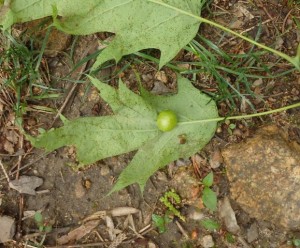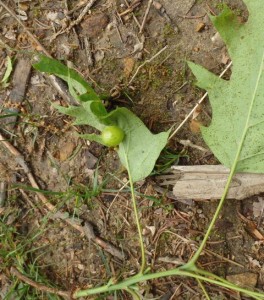Mariton: Oak Galls
by Tim Burris, Preserve Manager
Galls are something that have intrigued me since I was a little boy. In the wild fields of my boyhood the goldenrods got galls that formed a round ball on their stems. In late fall, you could cut the stem above and below the ball, and it would look like the old round wooden bobbers I fished with. Except they all had a little hole (where the insect left its home). Sometimes leaving the goldenrod gall wasn’t by choice. I remember watching Downy Woodpeckers as they worked a field full of goldenrods, drilling into the balls looking for the insects living inside.
I get lots of questions about galls, especially oak galls. I use the term loosely, as there are a few different species of insects that make galls just on oaks. Each of them look different. Gall making insects are usually species specific. In fact, a species will target a specific part of their host plant like the leaves, or twigs, etc. Explaining galls is one time that I feel you don’t have to be too scientific or precise. There are just too many different insects out there making galls on different plants.
To put it simply, an insect lays an egg on its host plant. But when it lays the egg, it also injects a plant growth hormone, or at least a synthetic hormone. Because of the injection the plant is tricked into growing material around the egg. That plant tissue provides food, moisture and shelter for the hatchling. In these photos, the leaf actually grew around the egg to form the gall. Ideally, when it is done feeding and developing, the baby eats its way out of its little biosphere to continue its next phase of life. Of course, there are other animals (including insects) that view galls as feeding stations.
Galls don’t really hurt the plant. Leaves keep photosynthesizing, and stems keep growing even with the galls. Do the adult gall insects attack insects that harm their host plant? That would be neat, but I don’t know. It is just a cool way that insects use plants.


